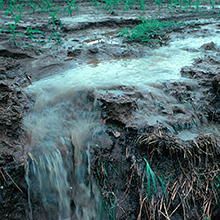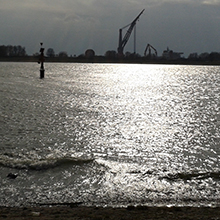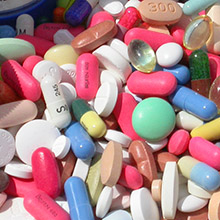Department Environmental Social Sciences
Micropollutants Regulation and Management
The Environmental Social Sciences Department (ESS) aims at understanding how individuals, households, public and private entities react to uncertainties related to micropolluntants in water bodies. More specifically, we wish to understand how different individuals and actors perceive the risks of micropolluntants and evaluate different technical measures and policy options to regulate micropollutants. Besides a regional and national perspective, we also aim at studying the regulation of micropollutants across borders and countries.
Background
Micropollutants are organic trace compounds or heavy metals which occur in the aquatic environment at very low concentrations. They are brought into waters through various entry paths and sectors such as industry, agriculture or households. Human activities such as farming, industrial production, cleaning, medicine (pharmaceuticals) or hygiene are thus at the source of micropollutants in aquatic ecosystems.
Micropollutants can enter water bodies via point sources (e.g. overflows from wastewater treatment plants) or diffuse sources (e.g. run-off from agricultural or urban areas). At the Environmental Social Sciences Department, we do not conceive micropollutants as a purely technical issue, but mainly as a social one. The core question is not how micropollutants can be eliminated but how individuals and the society can live with the unavoidable uncertainty related to micropollutants and what measures are perceived as adequate or sufficient for dealing with the problem.
Typical problems and research questions
In collaboration with natural scientists at Eawag, three core topics and approaches concerning the management and regulation of micropollutants were identified. These will be the main focus of mid-term research at ESS. The topics are listed along with some typical research questions:
Uncertainty, communication and public perception:
- How are potential problems and risks related to micropollutants in water perceived by the public?
- How can “scientific uncertainty” with respect to the effects of micropollutants be communicated?
- What are the stakeholders’ preferences in the face of scientific uncertainty?
Designing national and transboundary micropollution regulation:
- What tradeoffs exist between taking measures at the source and regulating micropollutants via an upgrade of wastewater treatment plants (end-of-pipe approach)?
- How to design transboundary water management within cantons and across countries?
- What are important objectives and preferences of stakeholders concerning micropollutants in water bodies (and their removal or avoidance)?
- Which technical measures or policy options best meet these objectives? In the case of conflicting objectives, can compromise solutions be suggested?
Economic perspective and household survey
- How much are Swiss households willing to pay for upgrading wastewater treatment plants to reduce micropollutants in water?
- Is the investment into measures for reducing micropollutants economically justified based on the cost-benefit analysis?
Publications
Logar, I., Brouwer, R. (2017). The effect of risk communication on choice behavior, welfare estimates and choice certainty. Water Resources and Economics
, In press, dx.doi.org/10.1016/j.wre.2016.11.004













